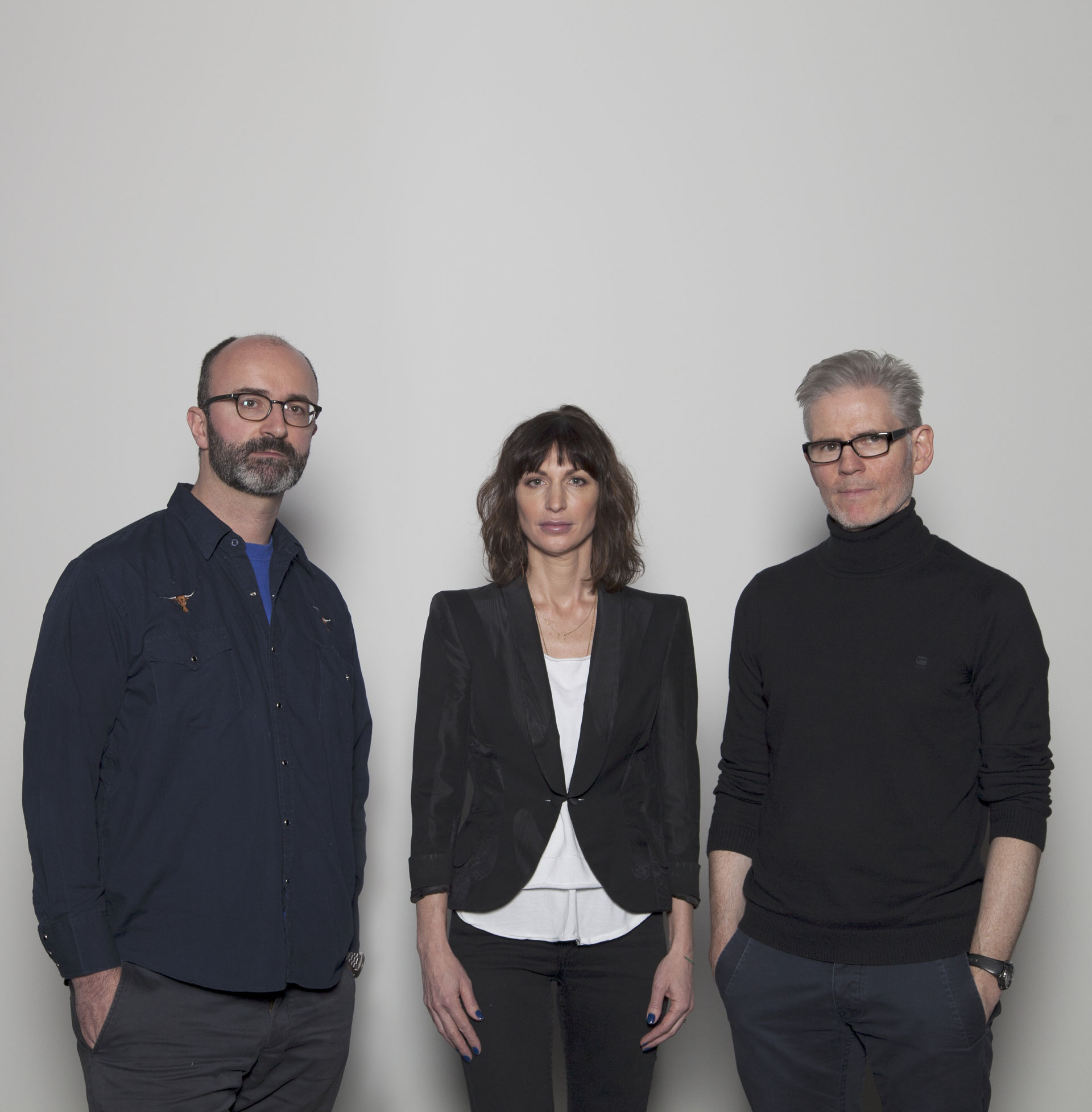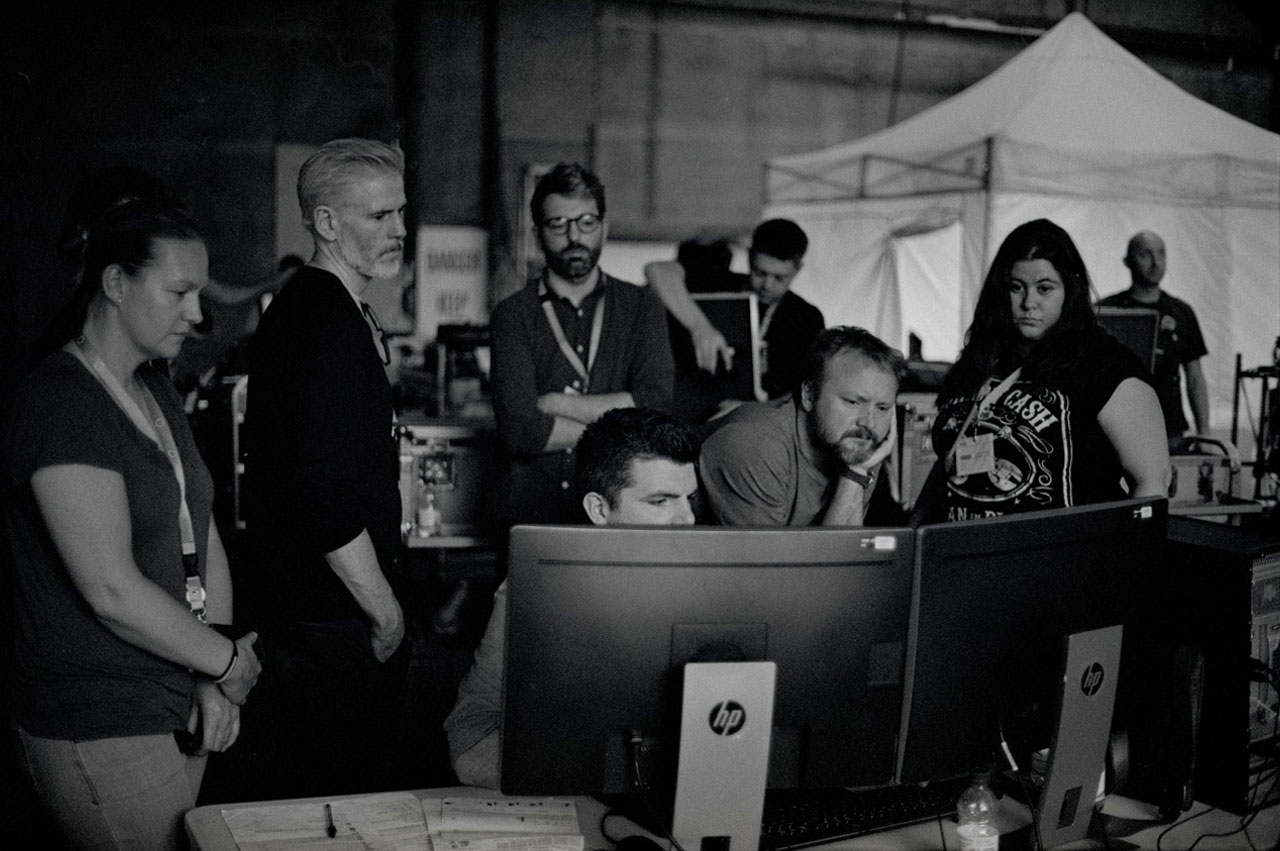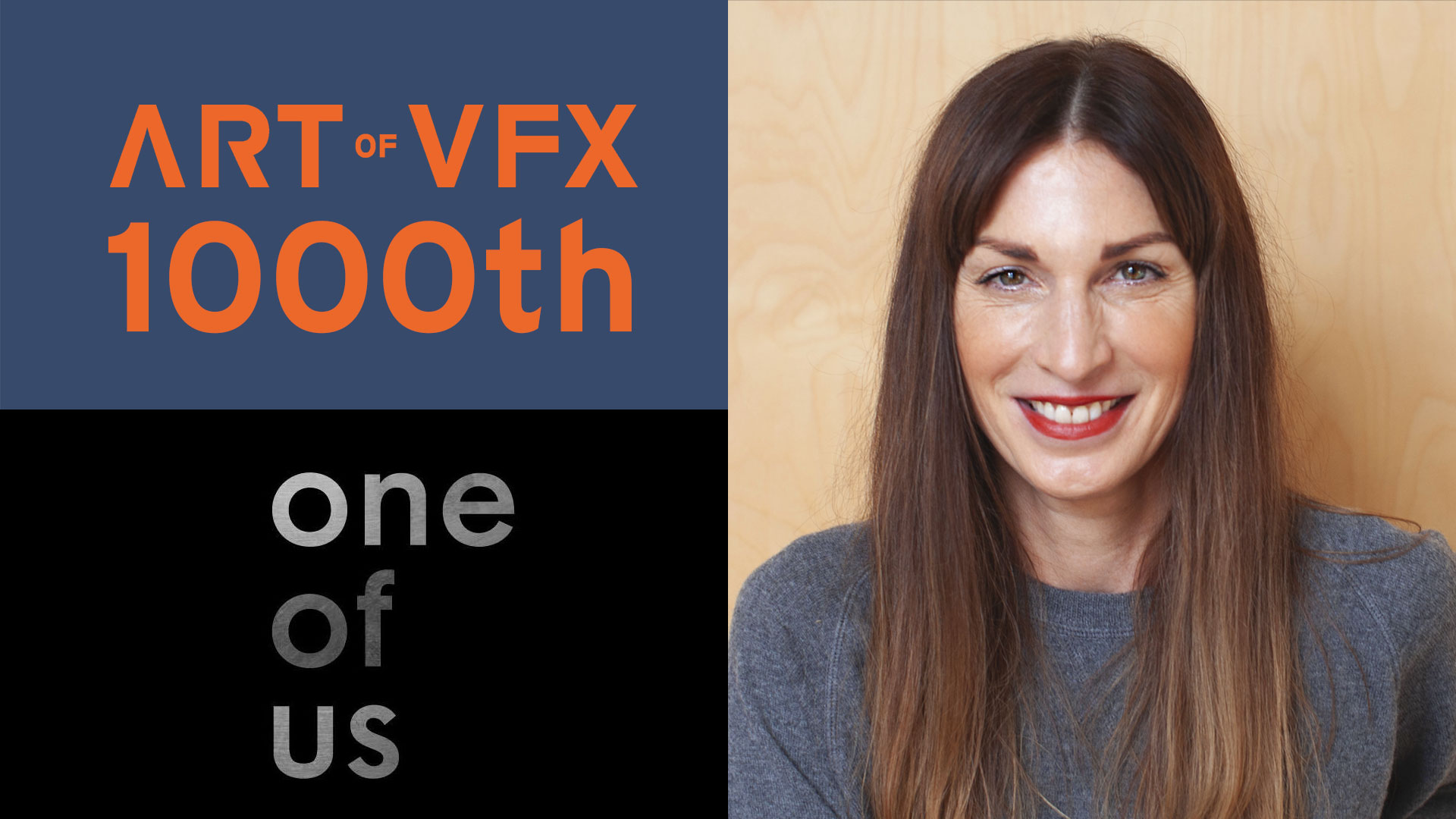One of Us is a Soho based studio founded in 2006 by co-directors Tom Debenham, Dominic Parker and Rachael Penfold. The company ethos is one of creative intelligence applied through filmmakers’ sensibility, with a focus on design and collaboration. Working across both film and long form, and with experience of all stages of production, from concept through planning, photography and post-production, One of Us has become an essential studio for visual effects and related work. With approved vendor status for all major studios, artist capacity and infrastructure for over 400 artists across both our facilities, we are expanding boutique sensibility into larger scale projects.
What was your first contact with visual effects?
I started as a runner 30 years ago at the Computer Film Company, so I guess that was my first contact with VFX. But actually when I was much younger my dad wrote a TV sci-fi series – Space 1999 – and I have vague memories of going onto the set and getting to see the very rudimentary (sorry dad!) special effects being used. If you look back on it now it’s wonderfully dated! But back then the magic of being on the sidelines and watching all this stayed with me.
What made you want to work in this industry?
It was absolutely the people. When I started at CFC I had the joy of encountering such a brilliant band of artists, innovators, big thinkers and oddballs. I thought great – this is exactly where I want to be hanging out.
How did you decide to start your own studio?
It was really a bit of an accident! It started organically when I was trying to look at the visual aspects of a film script and I realised I needed help from someone who was much more of a visual thinker than me! That’s when I got in touch with Dominic (Parker). We’d worked together at CFC and Framestore. Before long, Dominic said I think we need Tom (Debenham) and so he came on board soon after. It took 7 years for that project, Under the Skin, to be released as a film but it was really what started One of Us. A huge amount stemmed from there, and new, innovative projects arrived at our door. We took out a lease on a building, took on more projects, and before long we had a real collaborative bunch of people working together, so it just made sense to form a company.
How did you find the name of your studio and what’s his meaning?
It’s actually a reference to one of the early inspirations for that first project, a 1930’s horror film called Freaks. In the film, there’s a wedding banquet scene where the ‘circus freaks’ sit around a table and start chanting “we accept you, we accept you, you are one of us”. In its time it was a hugely controversial film, probably considered a horror. But actually it’s a very compassionate film. So for us I guess it had elements of outsiderness and humanity that chimed. Can I blame it on Dominic? – it was his idea.
Can you elaborate about the collaboration with your co-founders?
My co-founders are two of my best and closest friends. Tom Debenham and Dominic Parker. They’re such incredible people with great taste, great humanity – and so visually intelligent. We have a lot of fun, and challenge each other all the time. I couldn’t do it without them.

Can you tell us about the evolution of your studio since its launch until today?
The studio literally started life around my kitchen table, and now it’s grown to around 400 people. We have the privilege of working across London and Paris, on a huge variety of projects, about 10 projects a year. We’re proud to have made it this far, and our success stems from every individual. We place huge value on the work that our teams create and how we treat the people who make up One of Us.
Your studio has several offices. How did you choose these cities?
London was our original home, and then Paris seemed like an obvious next choice. The talent coming out of France is globally recognised as some of the best in the world. It’s always about the people, and in this case one person in particular, our Creative Director Emmanuel Pichereau. He’s a great artist and a great human. France is arguably the birthplace of cinema, so film is ingrained in the culture. They value all their arts – it’s a very exciting place.
Can you explain to us the pipeline and the workflow of your studio?
I often say how untechnical I am – and this is a very broad question! I do have regular meetings with our workflow and pipeline leads, but I do not try to understand any aspect of these areas in any detail – I don’t need to understand, and they don’t have the time to explain things! But we have tried to build a pipeline and infrastructure that allows us to serve the creative endeavour with flexibility and efficiency across multiple sites and cities. Our pipeline and workflow have evolved a lot over the last few years. What worked very well when we were 50 artists in the same space does not scale well to hundreds of artists in several studios – which is true of every aspect of our business – infrastructure, tech, communication, support, crewing. At the heart of things is a commitment to teamwork. We remain a team based set up, but with dedicated heads of department and discipline, so we give every artist a home. Communication is key, making sure that everyone can connect with one another and with the work.
How did you face the huge challenge of Covid?
Covid was a massive challenge, but there were also some surprising positives that we’ve taken from that time. Technically, I have to give credit to the teams who kept a cool head and were able to get the entire studio working remotely in a matter of days – like most companies, there wasn’t a precedent.
Seeing the way our artists and tech teams came together to solve problems was impressive. We also saw some fantastic examples of collaboration between studios, in particular for us, ILM and Framestore were amazing. Big credit to Fiona and Sue! They checked in on us, they shared thoughts, the spirit of helping each other out and working together was lovely to see. Obviously, none of us knew how things would pan out in those early days, but we were determined to ensure that whatever happened we didn’t have to let anyone go. A lot of credit also due to our senior leadership and employees who all offered to take financial hits for the greater good. It was a reminder of what a company of compassionate individuals we are – you really saw people at their best in that moment.
With this particular situation, how did you integrate young artists?
It was one of the hardest things, and in many ways still is. Exposing junior artists to the working practices of more experienced artists is much harder to do remotely. Gathering around a monitor or sitting in on a review doesn’t work in the same way any more. We are committed to blended working, so we have tried to find new mechanisms to make these things possible and we have found new ways to share knowledge, but it’s a work in progress. One important step has been the introduction of our new Head of Training, who is already proving a great support to younger artists. And we are looking at ways to encourage younger artists into the studio on specific days, with training, mentoring, and social opportunities.
What do you think are the next big steps for VFX?
I think the big steps will be in virtual production and AI and machine learning. Some aspects of virtual production have been around for a long time, as a craft, but technological advances allow us to take those techniques and use them in wholly different ways. AI/ML has the potential to change many things. Some would argue it could replace much of the creative process. But creating is a personal journey for many artists and filmmakers. It’s the language of turning feelings into images – nothing starts off fully formed. AI is a tool to help the process. The fear that technology will replace us has a long history, but things rarely turn out that way. All innovation should be about learning how to integrate it most appropriately. Understanding what image makers are trying to achieve will challenge us to use new technologies for the right reasons and this in turn will push innovation. So for us it’s exciting to see these new technologies turn up, and to work with filmmakers to find the best way to use them.

What was the most surprising comment you have received from a client?
One well known Director once said to me ‘I don’t know where you’ve come from but I’m so glad you’re here.’ and I just thought that’s exactly what I want people to think!
What do you like the most about VFX?
100% it’s the people. Everyone comes with so many interests, talents and hobbies – one of the most brilliant technical artists I’ve worked with was a fantastic knitter! Our industry is global and when people come to us bringing different experiences and cultural influences with them it’s just so interesting! Then having the chance to see what people can achieve, and celebrate that with them, is even better.
What is your best memory on a shoot and during post production?
That’s difficult! We did build an Alien Cathedral in the desert once, that was quite a challenge! But there have been so many great experiences, and to be honest, it’s not specific shoots that come to mind. Instead the best times are the ones where the whole team pulls together to overcome a particular challenge or try something new.
What is your favourite shot or sequence ever?
That’s also really difficult to answer, but I think it’s the same. All my favourite pieces are the ones where the challenges have been huge, but the collaboration, creativity and thinking has been even bigger. That’s when we can produce something amazing and beautiful.
What is the dream project you would like to work on?
Similarly, anything where there is opportunity for high levels of engagement and lots of involvement. Seeing the pleasure people take from that, whether it’s creating a beautiful image or cracking a technical problem. When you see collaboration work well it’s honestly one of the most exciting and rewarding things.
A big thanks for your time.
// One of Us – Reel 2022
WANT TO KNOW MORE?
One of Us: Official website of One of Us.
© Vincent Frei – The Art of VFX – 2022







